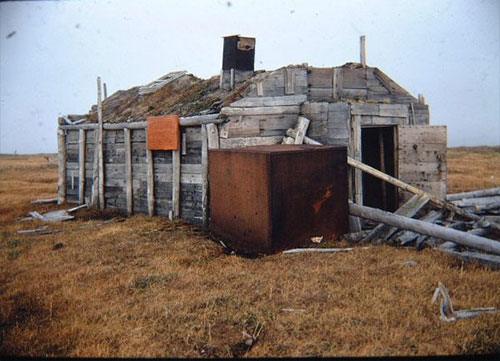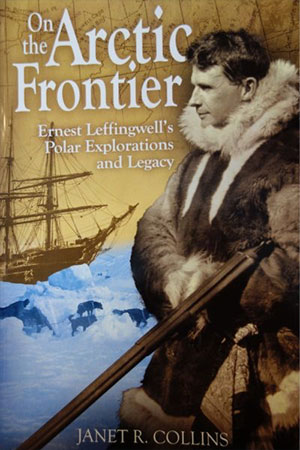
Biographer profiles scientist-explorer of northeast AlaskaBy NED ROZELL
November 14, 2017
In the early 1900s, Ernest Leffingwell lived for nine summers and six winters in a cabin on Flaxman Island, a wedge of sand off Alaska’s northern coast 58 miles west of Kaktovik. He mapped the coastline there, as well as inland spots like his Camp 163. He was the first person to describe and sketch underground ice wedges. He named the Sadlerochit oil formation that is the reservoir of the Prudhoe Bay oilfield. And he wrote about oil seeps that led government officials to create what is now the National Petroleum Reserve-Alaska.
Not many people knew who Ernest Leffingwell was, but a few Alaska scientists appreciate what Leffingwell left behind, most of it written up in a 250-page report for the U.S. Geological Survey in which he described how to live and work in the Arctic. Collins, a former director of the Huxley Map Library at Western Washington University, has now assured a few more people will know the scientist who absorbed the Arctic by living there in the early 1900s. Her book is “On the Arctic Frontier: Ernest Leffingwell’s Polar Explorations and Legacy.” In the detailed, 300-page work, Collins focuses on Leffingwell’s time in extreme northeast Alaska. For him, it was a busy, rewarding decade in a life that spanned 96 years.
He sailed north 111 years ago on an expedition to the northern coast of Alaska as part of a group of men who were trying to find evidence of a land mass in the Arctic Ocean. They found none. Everyone left except Leffingwell, who was a geologist, teacher and veteran of the Spanish-American War. He built a cabin on treeless Flaxman Island in 1906 using wood from the ship that brought him there and had run aground. From 1906 to 1914, he made 31 trips on the coastal plain and Brooks Range by sled and small boat. He wore fur clothes preferred by Natives and traversed more than 4,500 miles. He counted 380 times he camped in his tent. All this he wrote in his unusually long report, “The Canning River Region, Northern Alaska.” In that document, he included details that fire the imagination of some researchers today, like UAF permafrost scientist and reindeer farmer Kenji Yoshikawa. “(It’s) not just a typical science report or results paper,” Yoshikawa told Collins. “He focused on science, which was unusual for most Arctic expeditions of that time. . . . He is definitely the last classic polar explorer.” Yoshikawa admires Leffingwell’s interpretations of frozen ground features like pingos, enhanced by his year-round residency at a spot where the sun doesn’t shine for months. Though he did not want to write a popular book on life in the Arctic and preferred a scientific paper, Leffingwell’s report is quite readable and one of many sources Collins used to write her book. In his paper, Leffingwell included observations of everyday life, like how dogs reacted to wearing backpacks made of sealskin: “A good dog will pack half his weight all day, but he does not enjoy it,” and the coastal peoples’ opinion about polar bears: “Locally they are regarded much as wolves are in cattle country.” In “On the Arctic Frontier,” Collins shows a similar attention to detail, including descriptions of some of his trips that include temperatures and wind speeds. This may be too much information for casual readers, but perhaps not for Leffingwell’s admirers among scientists, including retired geologist Gil Mull, permafrost scientist and Fairbanks consultant Torre Jorgenson and northern researcher Matt Nolan, who has compared Leffingwell’s 1907 photos of Okpilak Glacier with recent ones. Collins’ book illuminates a character who loved the Arctic during the prime of his life, from ages 31 to 39, but never returned after moving to California. When Leffingwell died, his wife Anna, who he married soon after leaving Alaska, told a Monterey newspaper reporter her husband “never should have left the Arctic.” “On the Arctic Frontier” is now part of what Ernest Leffingwell has left behind, as are features on the Alaska map that a fellow geologist named for him in the Arctic National Wildlife Refuge: Leffingwell Creek, Leffingwell Fork and Leffingwell Glacier.
Representations of fact and opinions in comments posted are solely those of the individual posters and do not represent the opinions of Sitnews.
|
|||||

